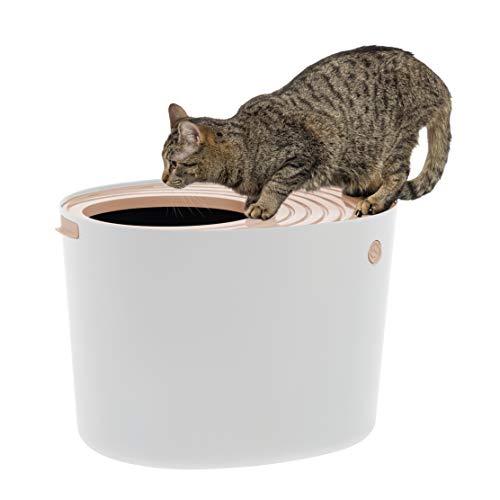One of the undeniable joys of welcoming a feline companion into your life is their inherent inclination towards cleanliness, their fastidious nature that often puts even the most meticulous humans to shame. For those embarking on the delightful adventure of cat parenthood, especially first-timers, the prospect of litter training might loom as a potentially daunting task. However, breathe a sigh of relief, new cat owners! The wonderful news is that litter training cats is often a remarkably straightforward and intuitive process, frequently bordering on effortless. Unlike the sometimes protracted and patience-testing journey of housebreaking a puppy, guiding a cat towards impeccable litter box habits is typically a gentle nudge in the right direction, allowing their innate feline instincts to take center stage. With the right understanding of their natural inclinations, a thoughtfully prepared setup, and a touch of positive encouragement, you can swiftly and seamlessly establish impeccable litter box etiquette, setting the stage for a clean and harmonious co-existence with your purrfectly polite feline housemate. Forget visions of endless accidents and frantic cleaning sprees. Cats, by their very nature, are predisposed to using a designated elimination area. This inherent behavior stems from a deep-seated feline instinct to bury their waste, a practice rooted in both hygiene and territorial marking. In the wild, burying waste helps to conceal their presence from predators and rivals, a primal behavior that thankfully translates beautifully into the domestic environment. Litter training, therefore, is less about training in the traditional sense, and more about simply providing the appropriate tools and environment that allow these natural feline instincts to flourish. It's about setting up the stage, so to speak, and letting your cat's innate cleanliness and self-sufficient nature take over, guiding them towards the litter box with minimal fuss and maximum success. Consider this your comprehensive and reassuring guide, your step-by-step roadmap to achieving effortless litter box mastery. We will demystify the process, walking you through each simple yet crucial step, from selecting the ideal litter box and litter type, to strategically placing the litter box in your home, establishing good habits from day one, and effectively addressing any potential minor bumps in the road that may arise along the way. Let's transform the prospect of litter box training from a source of potential anxiety into a confident and stress-free experience, ensuring a clean, harmonious, and wonderfully feline-friendly home for you and your newest furry family member.
To pave the way for seamless litter box success, the crucial first step is creating the optimal environment, meticulously setting up a litter box haven that is both appealing and functional for your feline companion. The foundation of any successful litter box setup lies in choosing the right litter box itself, a decision that often presents a surprising array of options, each with its own set of advantages and considerations. Let's begin by exploring the diverse landscape of litter box types. The standard open litter box, perhaps the most recognizable and widely available option, is characterized by its simplicity and affordability. Open boxes are readily accessible for cats of all ages and sizes, and their open design allows for good ventilation, potentially minimizing odor buildup. However, their open nature also means they offer less privacy for your cat and can be less effective at containing odors and stray litter, which can sometimes be scattered outside the box during enthusiastic digging and burying sessions. Covered litter boxes, in contrast, offer enhanced privacy for cats who prefer a more secluded elimination experience and can be more effective at controlling odors and containing litter within the enclosed space. The covered design can be particularly appealing in multi-cat households or homes where litter box visibility is a concern. However, covered boxes can also trap odors inside the box if not cleaned regularly, potentially becoming less appealing to your cat if not maintained meticulously. Some cats, particularly those who feel claustrophobic or prefer open spaces, may also dislike the enclosed feeling of a covered litter box, so feline preference should always be a guiding factor. Self-cleaning litter boxes represent the pinnacle of convenience for busy cat owners, automating the scooping process and minimizing manual litter box maintenance. These technologically advanced boxes utilize various mechanisms to automatically remove waste, often depositing it into a sealed receptacle for easy disposal. While offering unparalleled convenience, self-cleaning boxes can be more expensive than traditional litter boxes, and their automated mechanisms can sometimes be noisy, potentially startling or deterring some cats. Furthermore, they require electricity and occasional maintenance, and malfunctions, although infrequent, are a possibility to consider. Top-entry litter boxes present a unique design, requiring cats to jump into the box from above, offering excellent litter containment and making them particularly suitable for households with dogs who might be tempted to investigate the litter box. The top-entry design effectively minimizes litter tracking and can be more aesthetically pleasing in certain home environments. However, top-entry boxes may not be suitable for kittens, senior cats, or cats with mobility issues due to the required jump to access the box. Some cats may also dislike the feeling of confinement or the altered entry and exit routine. Beyond type, size is a critical factor in litter box selection. A litter box that is too small can feel cramped and uncomfortable for your cat, potentially deterring them from using it consistently. The general rule of thumb is to choose a litter box that is at least 1.5 times the length of your cat, allowing them ample space to comfortably turn around, scratch, and eliminate without feeling confined. For larger cat breeds, or for cats who prefer more spacious elimination areas, opting for an even larger litter box is always a beneficial consideration. And finally, when considering litter boxes, especially in multi-cat households or larger homes, the number of litter boxes is paramount. The widely accepted rule of thumb is to provide one litter box per cat, plus one extra. This “plus one” rule ensures that each cat has ample access to clean litter boxes, minimizing competition for resources, reducing territorial stress, and accommodating individual feline preferences for litter box location and cleanliness. In multi-level homes, strategically placing litter boxes on each floor is also highly recommended, ensuring convenient and readily available access to elimination areas regardless of your cat's location within the house.
Once the ideal litter box type and quantity have been determined, the next crucial decision lies in selecting the right litter itself, another area offering a surprising array of choices, each with its own unique characteristics and appeal. Let's explore the diverse world of cat litter options. Clumping clay litter remains the most popular and widely used type of cat litter, prized for its ability to form solid, scoopable clumps upon contact with moisture. This clumping action makes daily scooping incredibly easy and efficient, effectively removing waste and minimizing odors. Clumping clay litter is generally readily available, affordable, and familiar to most cats. However, clumping clay litter can be dusty, particularly during pouring and scooping, and some clay litters can be quite heavy, making litter box changes more physically demanding. Non-clumping clay litter, a more economical option, does not clump when wet, requiring full litter box changes more frequently. While often cheaper than clumping litter, non-clumping litter can be less effective at odor control and requires more labor-intensive cleaning as urine saturates the litter, necessitating complete replacement rather than simple scooping of clumps. Crystal litter, also known as silica gel litter, stands out for its exceptional absorbency and excellent odor control capabilities. These litters are composed of silica gel crystals that effectively absorb urine and dehydrate solid waste, minimizing odors and often requiring less frequent litter changes compared to clay litters. Crystal litters are often low-tracking, reducing litter scatter outside the box. However, crystal litter can be more expensive than clay litters, and some cats may dislike the texture of the crystals under their paws. Paper litter, often made from recycled paper products, presents an eco-friendly and low-dust alternative to traditional clay litters. Paper litter is often biodegradable and can be a good choice for cats or owners with respiratory sensitivities due to its low-dust qualities. However, paper litter can sometimes be less effective at odor control compared to clumping clay or crystal litters, and some cats may find the texture less appealing than traditional clay or crystal options. Plant-based litters, derived from natural materials such as corn, wheat, or walnut shells, represent another category of eco-conscious and biodegradable litter options. These litters are often marketed as being more environmentally friendly and sustainable compared to clay-based litters. However, plant-based litters can sometimes be more expensive than clay litters, and like paper litter, some cats may find the texture or odor of these natural litters less appealing. When considering litter types, it’s also important to contemplate scent. While scented litters might seem appealing to humans, masking odors with artificial fragrances, the vast majority of cats actually prefer unscented litter. Cats possess highly sensitive olfactory senses, and strong artificial scents can be overwhelming and off-putting to their delicate noses, potentially deterring them from using the litter box altogether. Texture is another often overlooked aspect of litter selection. Consider your cat’s age and paw sensitivity. Kittens and senior cats may have more delicate paws and may prefer softer, finer-textured litters that are gentler on their paws. Experimentation is often key to finding the perfect litter type that both you and your cat find satisfactory. Be prepared to try a few different types of litter to observe your cat's preferences. What works best is ultimately a highly individual decision, often dependent on your cat’s unique preferences, your lifestyle, and your budget.
Strategic litter box placement is the final piece of the puzzle in creating an inviting and functional litter box setup, ensuring your cat feels comfortable and secure using their designated elimination areas. Accessibility is paramount. Litter boxes must be placed in locations that are easily accessible to your cat at all times, regardless of their location within your home. Avoid placing litter boxes in inconvenient or hard-to-reach areas, such as in basements with difficult stair access, or behind obstacles that might make the litter box feel less readily available. Privacy is another crucial consideration for feline litter box etiquette. Cats are inherently private creatures and prefer to eliminate in locations where they feel safe and undisturbed. Choose litter box locations that offer a degree of privacy, away from high-traffic areas and busy thoroughfares within your home. Quiet and low-traffic areas are ideal. Avoid placing litter boxes in noisy locations, such as laundry rooms where machines operate frequently or near doorways with heavy foot traffic. A calm and peaceful ambiance promotes relaxation and encourages consistent litter box usage. Instinctively, cats prefer to eliminate away from their eating and drinking areas, reflecting their natural hygiene preferences. Place litter boxes away from food and water bowls, maintaining a clear separation between eating and elimination zones within your home. In multi-level homes, particularly, strategically placing litter boxes on each floor is highly recommended. This ensures convenient access for your cat regardless of which floor they are currently occupying, especially important for senior cats or cats with mobility limitations. Avoid drafty or cold spots when selecting litter box locations. Cats generally prefer comfortable temperatures for their litter box area, and placing boxes in drafty or excessively cold locations may make the experience less appealing, particularly during colder months. And finally, if you are introducing a new litter box into a household with existing cats, consider observing the habits of your resident feline companions. Note their preferred elimination areas and consider initially placing the new litter box nearby, respecting established feline routines and gradually adjusting placement if needed to optimize litter box accessibility and usage for all feline residents.
With the stage meticulously set, the actual litter training process is often remarkably straightforward, a testament to cats' inherent cleanliness and natural instincts. For newly arrived cats or kittens, initiating litter training within a confined space, employing the "safe room" approach, is highly recommended. Begin litter training within their designated safe room, that quiet and secure haven we discussed earlier. Place the newly prepared litter box, complete with your chosen litter, in a quiet, easily accessible corner of this confined space. In this initial stage, ensure that the litter box is the most obvious and readily available "bathroom" option within their limited environment. By confining them to a smaller space with readily available litter box access, you are gently guiding them towards the appropriate elimination area from the very outset. Once your cat is settled into their safe room, allow them a period of acclimatization before actively introducing the litter box. After they have had some time to explore their new surroundings and begin to relax, gently and calmly place them in the litter box. Allow them to explore and sniff the litter box at their own pace, giving them the opportunity to familiarize themselves with this new and designated elimination area. Resist the urge to force them to stay in the box if they appear hesitant or anxious. If your cat seems receptive and curious, you can gently take their paw and make a soft scratching motion in the litter. This action can subtly encourage their natural digging and burying instincts, hinting at the intended purpose of the litter box. Throughout this initial introduction, offer calm verbal praise and gentle petting if your cat exhibits calm and curious behavior around the litter box, reinforcing positive associations with this new and important area. Now, the art of litter training becomes one of observation and positive reinforcement. Closely observe your cat for subtle signs that they may need to use the litter box. Restlessness, pacing, circling, sniffing intently at the floor, or adopting a squatting posture are all potential indicators that they are seeking an elimination area. If you observe these pre-litter box cues, gently and calmly guide them towards the litter box, gently placing them inside if they seem hesitant. When your cat successfully uses the litter box, eliminating appropriately within the designated area, it is crucial to offer immediate positive reinforcement. Deliver enthusiastic verbal praise, gentle petting, or offer a small, high-value treat (if your cat is food-motivated). Positive reinforcement, delivered promptly and consistently, is absolutely key to solidifying the association between the litter box and a positive, rewarding experience, encouraging them to repeat this desired behavior in the future. Maintaining a clean litter box is not merely a matter of human convenience; it is absolutely essential for feline litter box compliance. Cats are notoriously fastidious creatures, and a soiled or odorous litter box can quickly become unappealing, potentially deterring them from using it altogether and leading to accidents outside the box. Scoop the litter box at least once daily, ideally twice, removing urine clumps and solid waste promptly. Regular scooping minimizes odors, keeps the litter box environment fresh and inviting, and signals to your cat that this is indeed a clean and appropriate place for elimination. In addition to daily scooping, completely change the litter and thoroughly clean the litter box on a regular basis. The frequency of complete litter changes depends on the type of litter you are using, the number of cats using the box, and your individual cat's habits. Generally, a complete litter change and box cleaning is recommended weekly or bi-weekly. When cleaning the litter box, use mild, unscented soap and water to thoroughly wash the box. Avoid harsh chemicals or strongly scented cleaners, as these can be off-putting to cats and may deter them from using the box after cleaning. Once your cat consistently demonstrates reliable litter box habits within their confined safe room, you can gradually begin to expand their territory, allowing them access to other areas of your home. Supervise their initial explorations of these new areas, keeping a watchful eye on their behavior and ensuring that litter boxes are readily available and easily accessible in other parts of your home, if you have chosen to distribute boxes throughout your house. Continue to closely monitor their litter box habits as they navigate this larger territory, ensuring they maintain consistent and appropriate elimination behavior as their world expands beyond the initial safe room sanctuary.







